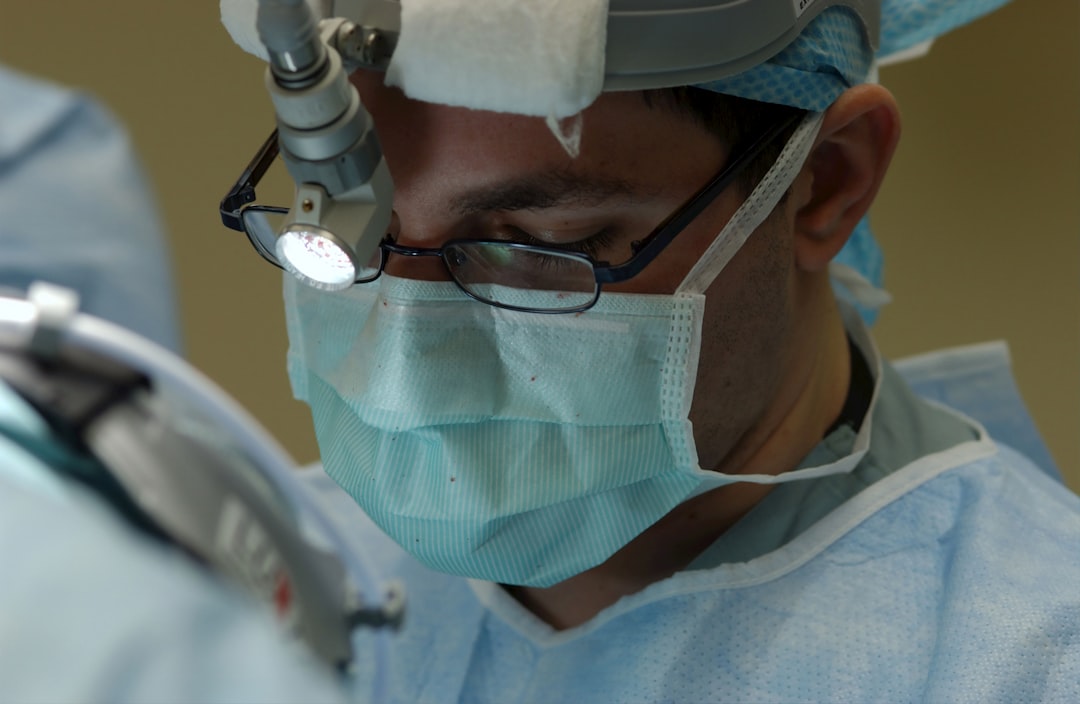What is it about?
Acute kidney injury (AKI) — previously known as acute renal failure — affects around 10% of patients admitted to hospital and costs the NHS around £1 billion every year. Currently there is no effective treatment and only around 50 per cent of patients survive. Those who do survive often require long-term, regular kidney dialysis and in the most serious cases may be placed on the list for a kidney transplant. Previous research in rodents has suggested there could be protective benefits by administering the hormone EPO which controls the production of red blood cells — but is better known as a performance enhancing drug — and the procedure RIPC, in which a blood pressure cuff is repeatedly inflated and deflated around an arm or leg to stimulate blood flow prior to surgery. However, scientists have previously been unable to uncover the mechanism by which these two protective methods appeared to work. Animal models are often used to explore how we can protect kidneys against the cellular damage that can occur as a result of general surgery. To date, these have been usually laboratory rodents. Pig kidneys, unlike rodent kidneys, are much more similar to human kidneys. Therefore drugs or medical interventions successfully tested on a pig are more likely to work in a human. This study has showed that both methods appeared to offer a protective effect, while EPO was the more effective out of the two in the short-term. Crucially, they have now outlined a mechanism by which the techniques may reduce the cellular damage which causes acute kidney injury.
Featured Image
Why is it important?
This study has showed that both methods appeared to offer a protective effect, while EPO was the more effective out of the two in the short-term. Crucially, they have now outlined a mechanism by which the techniques may reduce the cellular damage which causes acute kidney injury
Perspectives
Background: Acute Kidney Injury (AKI) is common, serious and, to date, has no specific treatment. Outcomes after AKI have not changed significantly for decades, but some of the clinical consequences of AKI are becoming clearer, such as the risk of residual chronic kidney disease in survivors of AKI. The financial cost of AKI is huge, estimated at over £1 billion per year in the United Kingdom. Renal ischaemia-reperfusion (IR) is a common cause of acute kidney injury and can occur after cardiac, vascular and other surgery as well as in other clinical situations such as trauma. There is some evidence from clinical trials that pre-operative erythropoietin (EPO) or remote ischaemic preconditioning (RIPC or simply RIC) might have a renoprotective effect, but the mechanism is not clear. To date, animal models exploring the mechanism of possible renoprotection have largely been in laboratory rodents. Rodent models, though convenient and relatively cheap, are inadequate in several respects. For example, the physiology and anatomy are dissimilar to humans and they are unsuitable for some technical interventions such as serial renal biopsy after IR-injury. Here, we have developed a porcine model of acute kidney injury in order to address the research question, ‘Does EPO or RIPC delivered preoperatively protect against AKI in a preclinical animal model?’. We also highlight an intrarenal adaptive mechanism that may underpin any renoprotective action of EPO and RIPC. Key results: We found that, after optimization (see Figure S1), 40 mins IR in the pig faithfully recapitulated moderate AKI in the human kidney based on; 1) the increase in serum creatinine (see Figure 2A) and 2) serial histopathological assessment at 24 (by percutaneous biopsy; Figure S2) and 48h reperfusion (post-mortem tissue; Figure 1). We also observed that the urinary albumin:creatinine ratio (ACR) together with plasma NGAL marked kidney injury at the earliest available time-point (2h reperfusion; Figures 2 and 3). IR-injury was characterised in renal cortical cells by significant ischaemia-reperfusion induced apoptosis (Figure S3). However, we show for the first time in a preclinical model that pre-operative treatment with EPO or RIPC enabling better clearance of apoptotic cells into the urinary tract i.e. in IR-EPO and IR-RIPC groups, the majority of apoptotic cells were within the lumen of tubules rather than distributed randomly throughout the interstitial space (Figures 4 and S4). On previous evidence, this phenotype would suggest a mechanism for the renoprotective action of EPO and RIPC in the long-term. Furthermore, whilst we show that IR-injury increases renal cell proliferation (marked by a greater number of PCNA+ve cells; Figure 5), as previously described, we go on to show that erythropoietin – but not remote ischaemic preconditioning – reduces the number of subcapsular cells stalled at G2-M (marked by fewer p-H3+ve cells; Figure 5). This suggests that erythropoietin pushes cells through the G2 and M-phases of the cell cycle, likely reducing the risk of longer-term fibrosis developing. Consistent with this effect we also show that erythropoietin blunts the increase in plasma IL-1β (a marker of sterile inflammation and early biomarker for renal fibrosis) such that by 24 h, levels were indistinguishable from controls (Figure 6). These data, in summary, provide the first good evidence in a relevant preclinical model that erythropoietin, and to a lesser extent remote ischaemic preconditioning, mitigates some of the early detrimental cellular changes associated with acute kidney injury. Potential impact of the manuscript: To our knowledge this would be the first publication to investigate the potential renoprotective efficacy of EPO or RIPC in a large animal model. This is important as the kidneys of a pig are very similar to human and responses observed are much like those expected in a human – reducing the barrier to translation of important research findings. Furthermore, we were able to biopsy the kidney serially – something not appropriate in humans and not practical in rodents. In a recent paper (Parekh et al, JASN; 24: 2013) IR-injury was investigated in humans (mean duration of renal artery clamping was 37mins) and the serial change in the urinary ACR was very much like we observe in this manuscript i.e. peaking at 2h – providing validity to our conclusion that urine ACR might be a valuable early biomarker of AKI (and far cheaper at present than some of the novel putative biomarkers that have attracted much attention recently, such as NGAL, KIM-1 and IL-18). However, whilst the study of Parekh et al was only able to biopsy at 5 min reperfusion and little observable injury was evident, we extend these findings to 24 and 48h reperfusion. At these time points considerable histopathological changes had developed. We go on to describe a potential explanation for the short-term renoprotective efficacy of EPO (and RIPC, to a lesser extent), demonstrating changes to the cell cycle in tubular cells. These data suggest that there is merit in investigating the putative renoprotective effect of EPO, and possibly RIPC, further. Despite equivocal outcomes in clinical studies investigating EPO as a renoprotective agent in AKI, optimal clinical dosing and administration of EPO have not been established, and our data suggest that further clinical studies are justified.
Professor David S Gardner
University of Nottingham
Read the Original
This page is a summary of: Remote conditioning or erythropoietin before surgery primes kidneys to clear ischemia-reperfusion-damaged cells: a renoprotective mechanism?, AJP Renal Physiology, February 2014, American Physiological Society,
DOI: 10.1152/ajprenal.00576.2013.
You can read the full text:
Resources
Contributors
The following have contributed to this page










